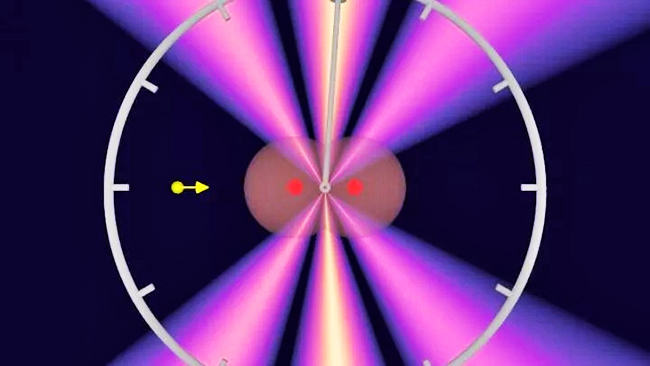|
from Space Website
produces electron waves out of an electron cloud (grey) of a hydrogen molecule (red: nucleus). The result of those interactions is what’s called an interference pattern (violet-white). The interference pattern is slightly skewed to the right, allowing researchers to calculate the time
for the photon to get from one atom to the next.
That time, for the record, is 247 zeptoseconds.
Previously, researchers had dipped into the realm of zeptoseconds:
This accuracy is a huge leap from the 1999 Nobel Prize-winning work
that first measured time in femtoseconds, which are millionths of a
billionths of seconds.
To measure this very short trip, physicist
Reinhard
Dörner of Goethe University in Germany and his colleagues shot
X-rays from the
PETRA III at Deutsches Elektronen-Synchrotron (DESY),
a particle accelerator in Hamburg.
The photon bounced one electron out of the molecule, and then the other, a bit like a pebble skipping over the top of a pond.
These interactions created a wave pattern called an interference pattern, which Dörner and his colleagues could measure with a tool called a Cold Target Recoil Ion Momentum Spectroscopy (COLTRIMS) reaction microscope.
This tool is essentially a very sensitive particle detector that can record extremely fast atomic and molecular reactions.
The COLTRIMS microscope recorded both the interference pattern and the position of the hydrogen molecule throughout the interaction.
That time?
The measurement is essentially capturing the speed of light within the molecule.
The results (Zeptosecond
Birth Time delay in Molecular Photoionization) were detailed Oct. 16 in the journal Science.
|


